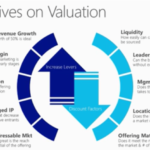[New Post] Answer these 14 Questions to become a Great Marketer
The key questions in this post are derived from Philip Kotler’s seminal work on marketing management.
1. WHAT ARE THE MAJOR WAYS IN WHICH WE CAN GROW THE BUSINESS?
This should be the main agenda on a marketer’s worry-plate, especially the one who deals with SMEs. Experience and observation inform that some of the problems that SMEs are trying to address are less about marketing and more about business growth. You may have to negotiate changes that fall in the domain of R&D, CEO, partners, technologists or suppliers.
Thus, if a marketer brings it in the strategic agenda, it gives him/her an edge over a marketer who frets difficult discussions.
2. HOW DO WE SPOT AND CHOOSE THE RIGHT MARKET SEGMENTS TO SERVE?
This is the last thing that an average marketing strategist asks an SME owner/founder. Assuming that the company is already serving the right market segments is a mistake that costs dearly.
Even if the company is serving the right customers, and hence right market segments, answering this question allows the company to come-up with strong reasons of serving the customers.
3. HOW CAN WE DIFFERENTIATE OUR OFFERING FROM COMPETITORS?
Answering the second question, by design, makes it easy to answer the third one; how to differentiate from competitors? Often times, marketers see competitors with hostility. Remember, they are the ones who keep us on our toes and compel us to better serve our customers.
4. HOW SHOULD WE RESPOND TO CUSTOMER WHO PRESS US FOR LOWER PRICE?
Since most marketers dealing with SMEs are unsure of the answers to the first few questions, they’ll hardly be able to handle this one.
Responding to customers who press for lower prices, especially in services businesses is far easier than product businesses. A consultant has much more room to re-frame the customer’s problem than a person representing the product business. This allows us to gain a negotiation room, often hard to gain in a product business.
5. HOW CAN WE COMPETE AGAINST LOWER-COST, LOWER-PRICE COMPETITORS FROM HERE & ABROAD?
Answering this question requires a strong grip at the cost and value maps of your services. The main sources of cost for service business are human capital and marketing & sales cost. The globalization of economies and digitization trend makes it easier for offshore businesses to service clients in foreign markets. So, Kotler rightly identified it as the core challenge that a marketer should address.
6. HOW FAR CAN WE GO IN CUSTOMIZING OFFERS?
This is a question that must be handled jointly by the marketing and production/service team. If both collaborate, the company may be able to customize more than initially thought. Conversely, making customized offers at the marketer’s own whim may estrange the development/service team, and hence undesirable.
7. HOW CAN WE BUILD STRONGER BRANDS?
This is something continuously overlooked by SMEs. B2B SMEs are even less likely to engage in building a brand. Consistent paychecks from their business customers does not compensate for branding. As initial growth plateaus, branding becomes even more important.
8. HOW CAN WE REDUCE THE COST OF CUSTOMER ACQUISITION?
The previous question, and an effective answer to it, enables an SME to acquire customers in a cost-efficient manner. Ignore branding and the small business may be found running after customers.
9. HOW CAN WE KEEP CUSTOMERS LOYAL FOR A LONGER PERIOD?
In a B2B context, the answer is to stay ahead of the customer and make customer’s derived value larger than the implied cost of keeping you as a supplier/vendor. Business buyers are well-informed and well-trained. If your product or service fails to deliver business value, hardly any company will trust you.
10. HOW CAN WE TELL WHICH CUSTOMERS ARE MORE IMPORTANT?
This question partly relates to the first few questions, of selecting and serving the right customer and market segments. Develop buyer personas to help determine which customers are more important.
11. HOW CAN WE MEASURE THE PAYBACK FROM ADVERTISING AND PUBLIC RELATIONS?
Measure the payback on advertising and PR by closely tracking the revenue and qualified leads that these campaigns generate.
Also, track if such campaigns bring new information that contradicts initial assumptions about your target market. In some cases, this learning is more important. Such information enables SMEs to pivot away from the wrong customer or market segments.
For example, if the SME has just bought some Super cheap signs and car magnets, when a new client rings up, simply ask them where they got their phone number from. If it’s from the car magnet, that advertising tactic is obviously working.
Cohort analysis is a useful tool to ascertain which customers to retain and which to let go. It is valuable to obtain validated insights from customer groups, based on the behavior they displayed when interacting with your product/service.
However, a stand-alone campaign is the last thing a marketer should focus when servicing an SME.
12. HOW CAN WE IMPROVE SALES-FORCE PRODUCTIVITY?
Provide them something that is remarkable. Give sales force something customers find hard to resist and then invest in sales force’s training and development. Give them the tools and understanding they need to sell your services.
13. HOW CAN WE ESTABLISH MULTIPLE CHANNELS AND YET MANAGE CHANNEL CONFLICT?
Marketers can address this challenge by developing differentiated products/services for each channel or market segment. For instance, consultants can offer different services for end-customer and channel partners. Work backwards; mitigate any cost-related issues that may arise due to multi-channel strategy.
14. HOW CAN WE GET OTHER COMPANY DEPARTMENTS TO BE MORE CUSTOMER ORIENTED?
Start addressing this challenge by giving intelligent answers to questions 1, 2 and 10. Further, it boils down to a marketer’s ability to communicate the value and contribution of his/her efforts and by developing a company-wide shared perception regarding growth, business development and customer service.
These questions can be used as guideposts to keep the planning vs. execution momentum going.
Ideas in this article are inspired from the following researches, articles and companies. The opinion also nourished on my experience as a former SME founder, chronic reader & writer and through my interaction with offshore clients.
Philip, K. Marketing Management. Prentice Hall International.
Sherice Jacob: A thorough marketing post on KISSmetrics


![Why Power and Utility M&As Fail in Integration [Infographic]](https://alliedc.com/wp-content/uploads/2016/05/common-integration-gaps-in-power-and-utilities-1-150x150.jpeg)




